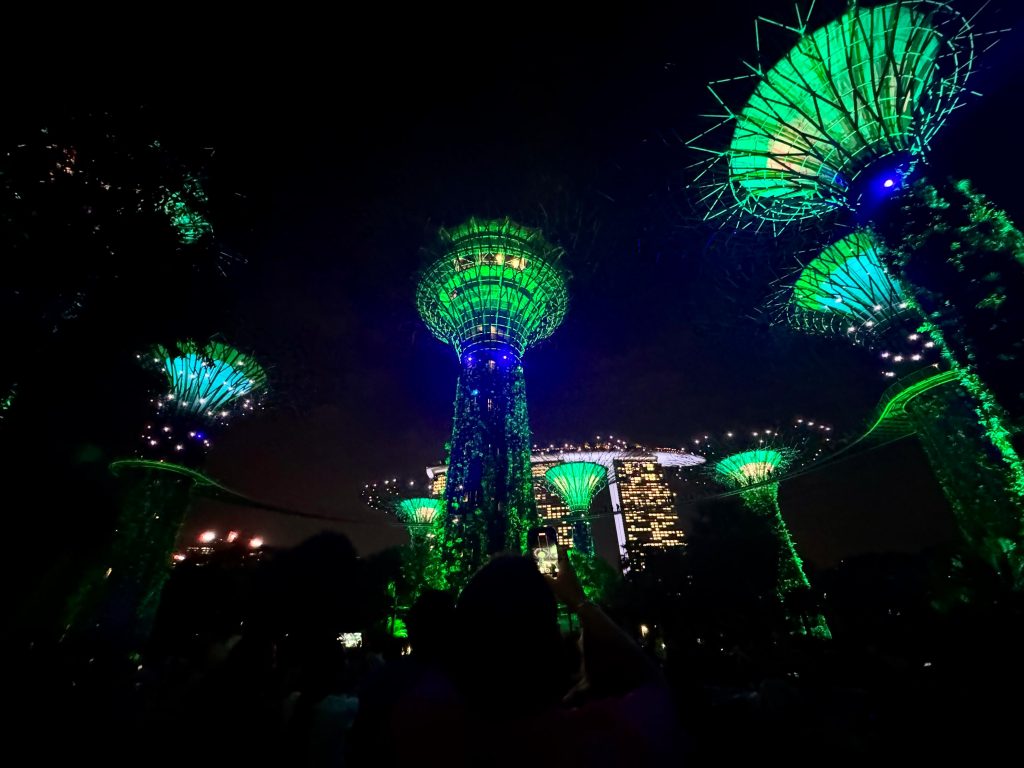Our first official day in Singapore started with a heartfelt welcome from Ronnie, our personal guide, storyteller, and proud local. From the first moment, he didn’t just show us places, he brought Singapore to life through stories, facts, and a genuine love for his home.

Throughout the day, he guided us through narrow alleys and unexpected corners of the city. During our bus rides, he kept us entertained and informed, giving context to everything we saw. For example, the Singapore River, once heavily polluted, was a key trading route. Today, it’s clean, scenic, and symbolic of Singapore’s transformation.
Our first stop was Little India. The vibrant local market surprised us with everything from exotic fruits to fresh seafood (including baby sharks). Just outside, another street market offered vegetables and spices from India, many of them in shapes and colours we had never seen before.
Ronnie pointed out that every part of the banana tree is usable. The stem, the flower, and the fruit all have a culinary purpose, some eaten raw, some cooked.
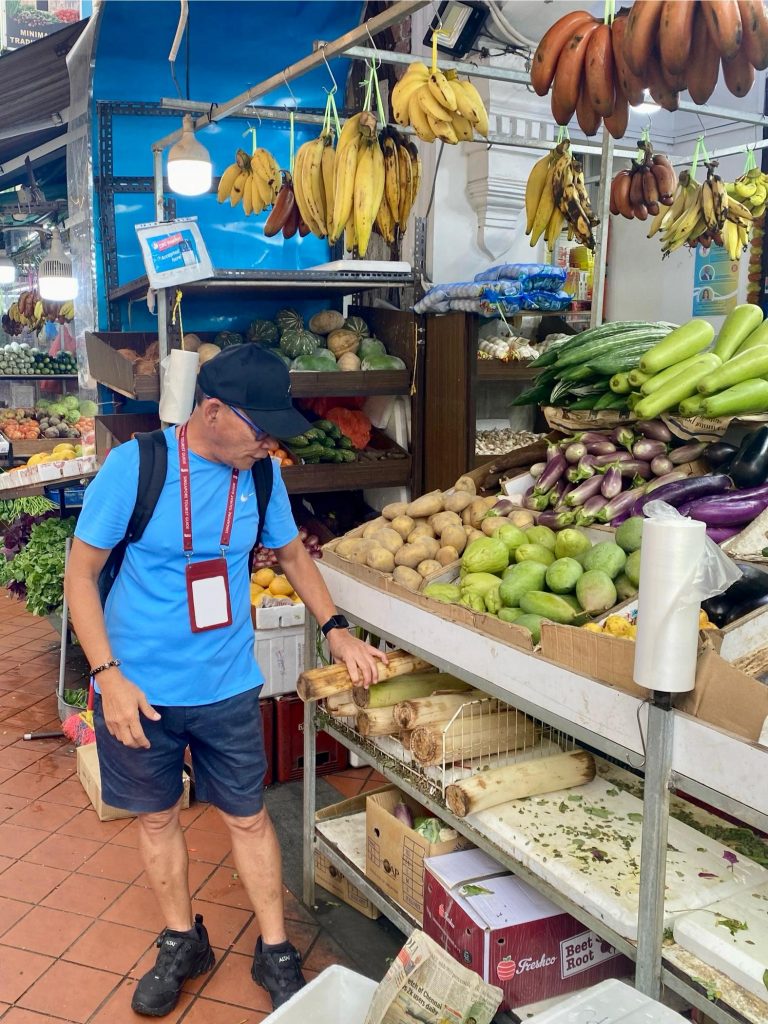
We also learned that feeding wild animals comes with a 10,000 SGD fine. Consider yourself warned.
Next, we visited a Hindu temple. It offered a deep insight into Indian spirituality, with intricate carvings and vibrant rituals.
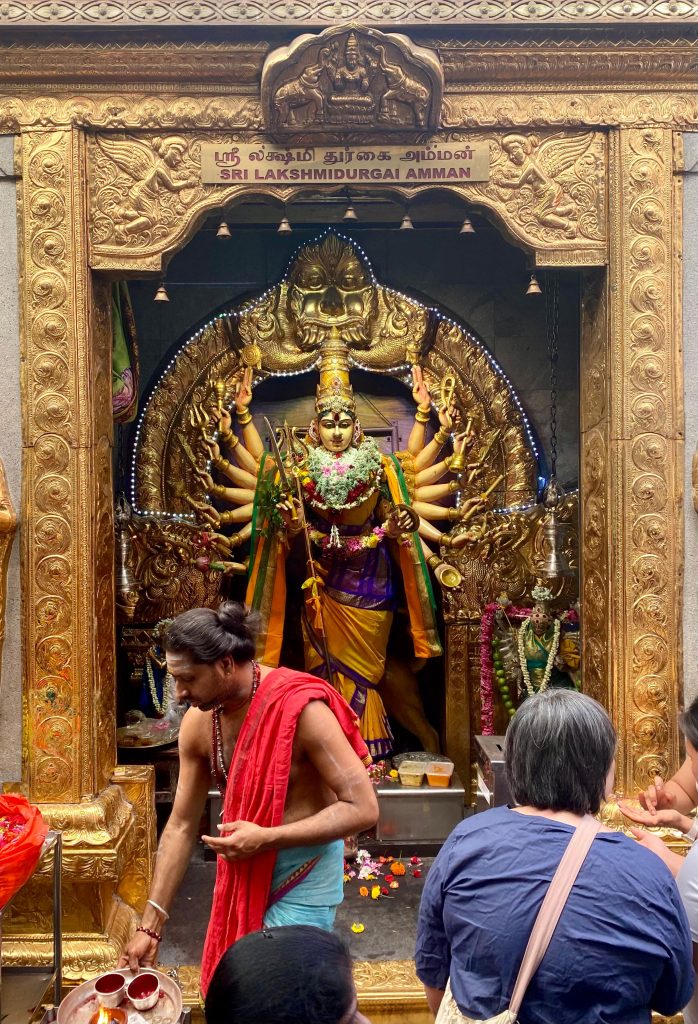
We then continued to Haji Lane, a colourful street in the Muslim district, where we admired the majestic Sultan Mosque. With proper attire, we were invited inside for a glimpse into another cultural world.
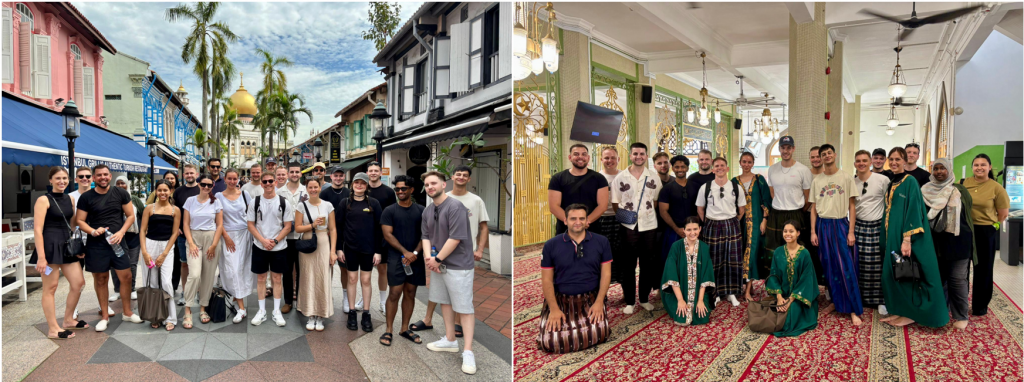
Hungry and curious, we made our way to Lau Pa Sat, the oldest hawker centre in Singapore. The food choices were endless. Everyone found something delicious, from local satay skewers to spicy noodles and vegetarian dumplings.
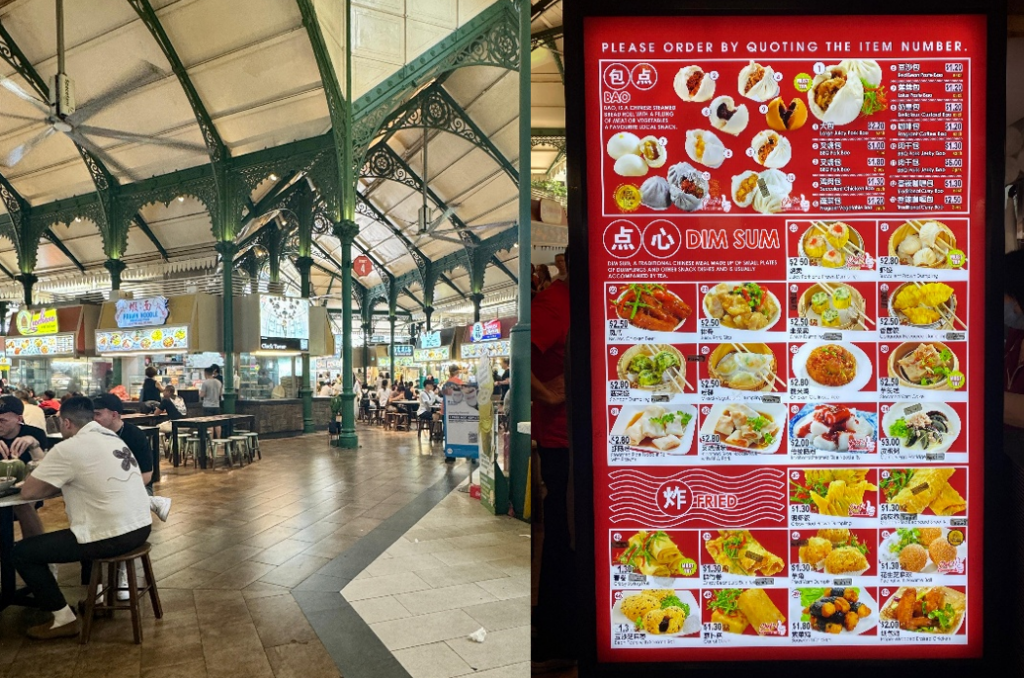
At City Hall, we stood in a place where major moments of Singapore’s past happened, from signing peace treaties to joining and later leaving Malaysia. We even learned what happens if you chew gum on the streets here. Spoiler: it’s a bad idea.
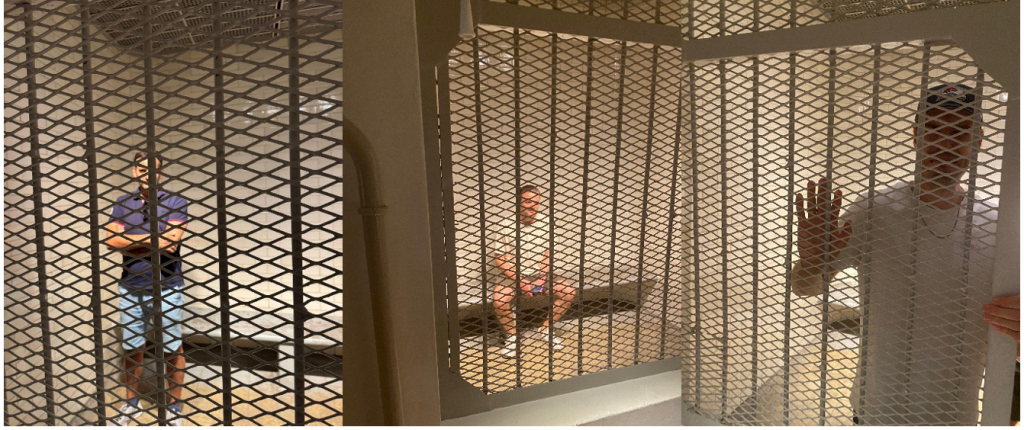
Above us stood a UFO…, officially known as the Supreme Court. Beneath our feet, a time capsule is buried, set to be opened in the year 3000. We all agreed to come back for it.
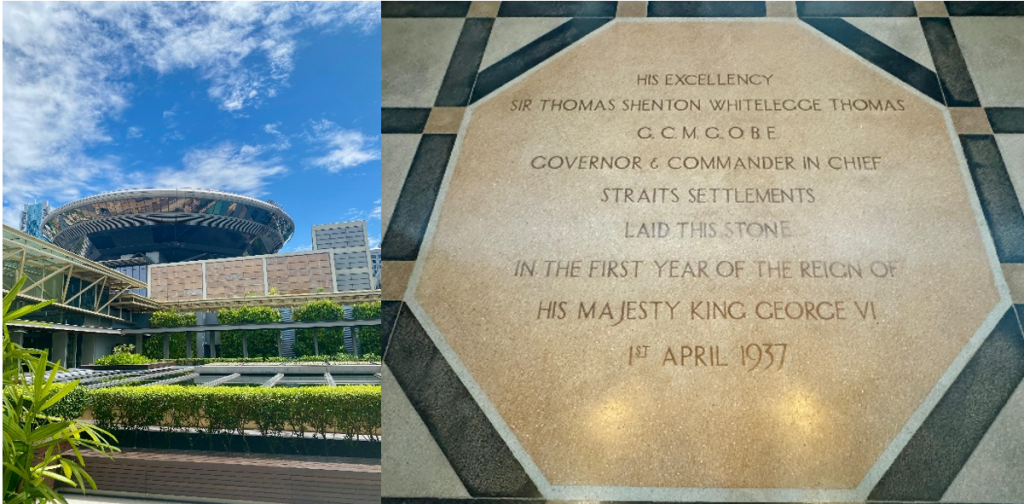
On our walk to the iconic Merlion, we passed the Brazilian 5 o’clock tree, which folds its leaves when it gets dark. The Merlion itself, part lion and part fish, stands as a symbol of Singapore’s heritage, a former fishing village named Temasek that evolved into a powerful city-state.
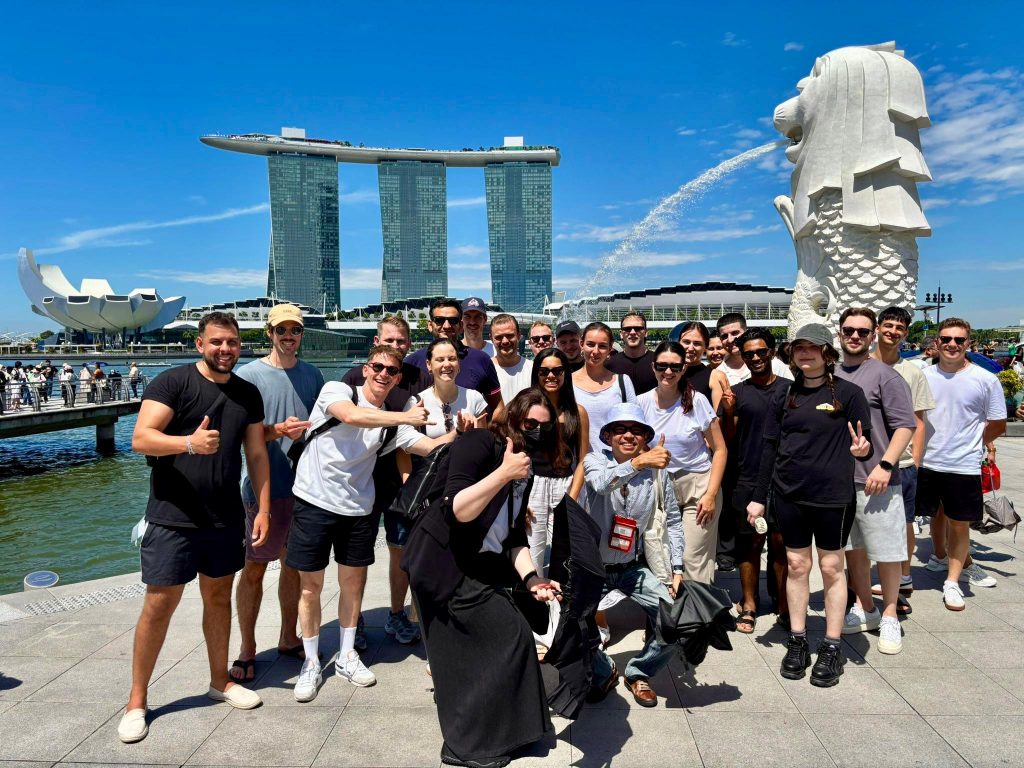
In Chinatown, we visited the Buddha Tooth Relic Temple. Inside, we found dazzling relics, some covered in solid gold. On the first floor, monks chanted mantras that filled the temple with peaceful energy.
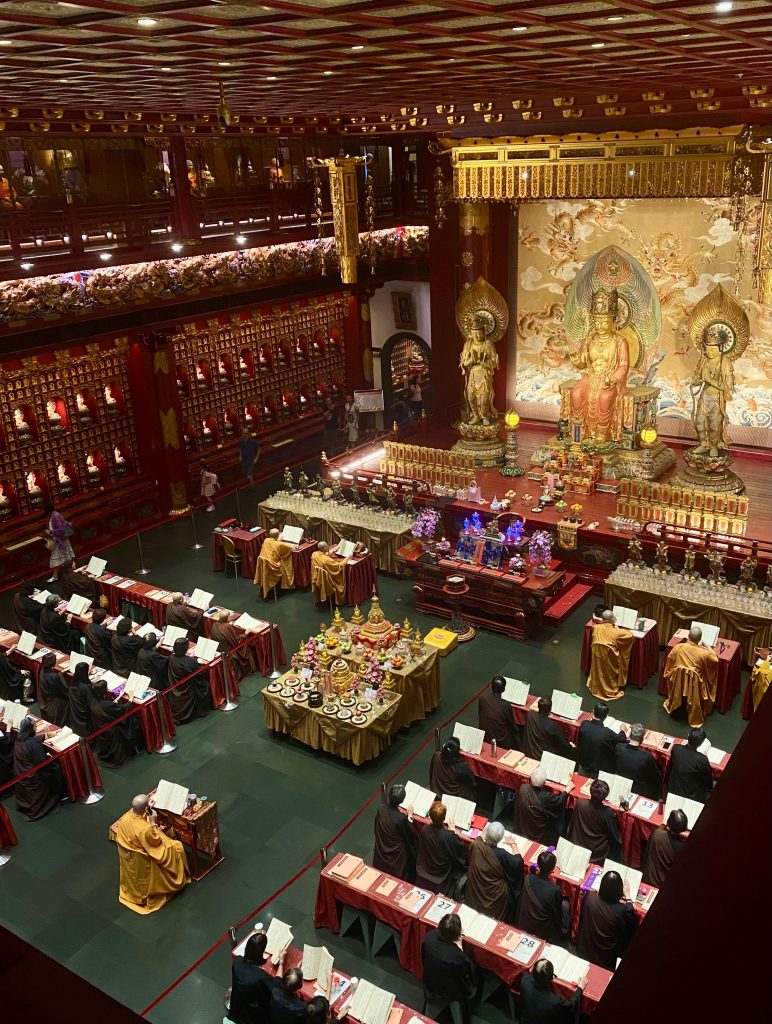
Our last stop was a local coffee shop, where we enjoyed an iced “Kopi Peng” and listened to Ronnie share what makes Singapore tick. Whether it’s preparing the Formula 1 track months in advance or rehearsing every Saturday for the National Day Parade, Singapore plans with precision. They aim to reach their 2030 sustainability goals through solar energy, recycled water, and strong public transport.
Owning a car here? Not easy. First, you need to buy a government-issued certificate that costs around 150,000 SGD and is only valid for ten years. No wonder people choose BMW — Bus, Metro, Walk — just like Ronnie.
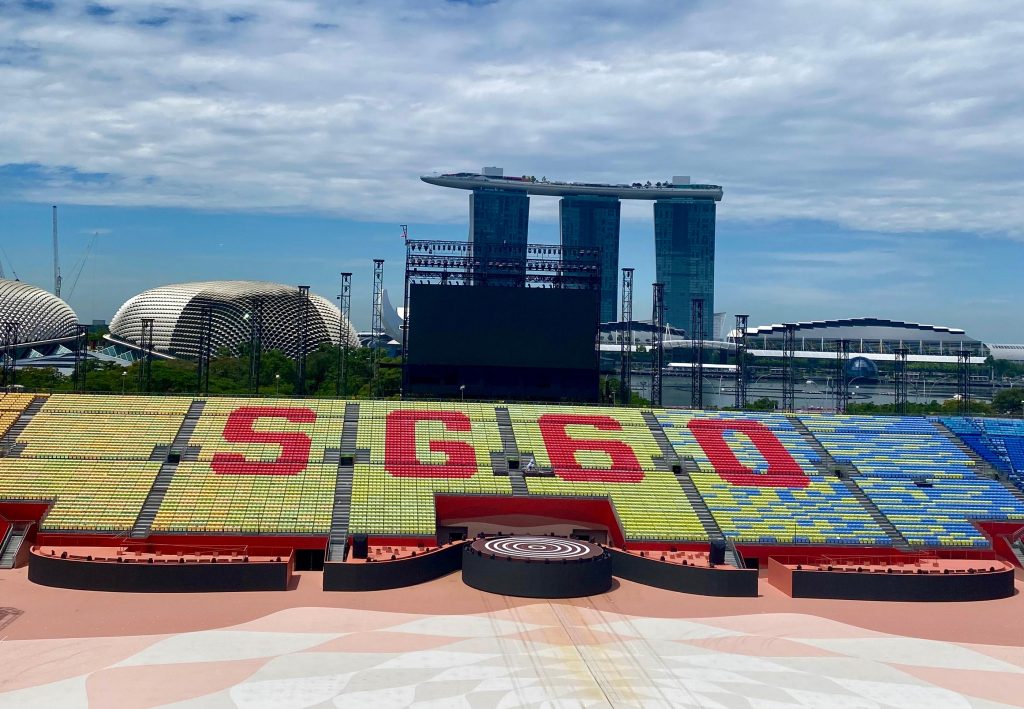
In the evening, we headed to Satay by the Bay for dinner. Surrounded by greenery and the scent of grilled skewers, we tried local favourites while enjoying the warm tropical air.
From there, we walked to the Supertree Grove in Gardens by the Bay. As night fell, we watched the Garden Rhapsody light show, and it was truly breathtaking. Towering tree-like structures lit up in sync with music, transforming the grove into a glowing forest of sound and colour. For a few minutes, it felt like stepping into a futuristic dreamscape, thus ending our day with a highlight.
